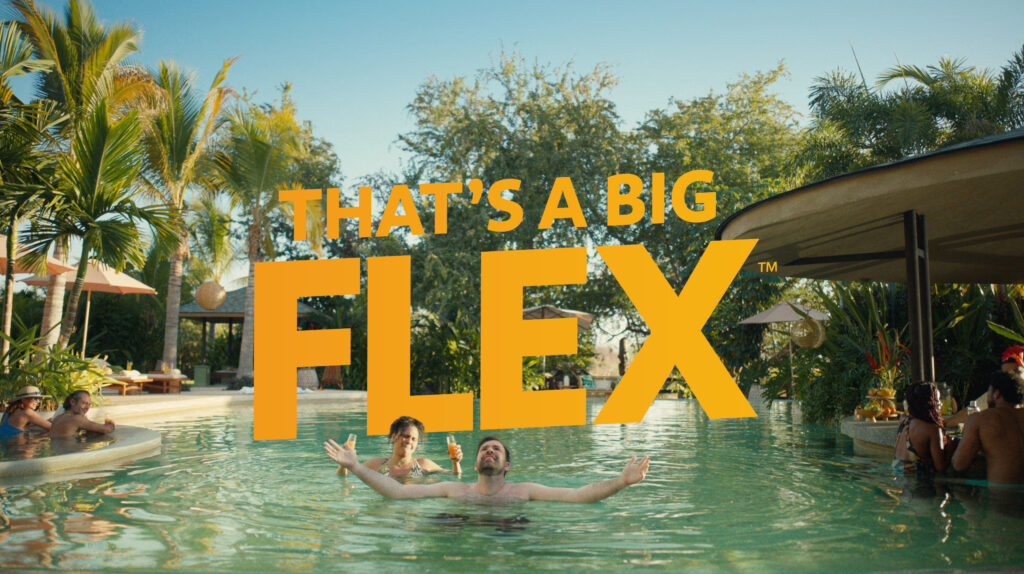As vaccinations increase and the world slowly reopens, insurance brands are returning to their use of humor and entertainment. During the 2021 NCAA championship, Aflac released a new campaign called the “Aflac Post-Pain Show,” starring Rob Riggle and Lil Rel Howery. In addition to the return of college basketball, the supplemental insurance brand is looking forward to the return of football.
“We will continue to lean into humor and the role of TV advertising to drive entertainment,” said Shannon Watkins, SVP of Marketing at Aflac. “The reopening of the country is exciting for Aflac because we can get back to football. Football is a part of our brand heritage, our history, and our platform which enables us to tell meaningful stories to Americans from coast to coast. We couldn’t be more excited as we begin planning for marketing in 2021 and beyond.”
In competitive categories, brands must work harder to differentiate themselves and gain audience attention. The insurance category is saturated with companies vying for audience loyalty, leading to the production of some of the most entertaining, memorable, and hilarious content in the linear TV space.
There is an immense amount of diversity among brands in the insurance category, from medical to auto to home. However, despite their differences, many insurance brands turn to TV to express unique messaging and connect with consumer audiences.
Aflac, a company which provides supplemental insurance, is known for their distinct mascot, the Aflac Duck. The brand’s key goal is to show non-policy holders that they are not as prepared as they think for unexpected medical bills. Aflac aims to engage younger audiences with their content, as consumers in their early 20s are most likely to need supplemental insurance after getting their first job and moving out of their childhood home.
“When I think about connecting our brand to audiences, at the end of the day, people intrinsically seek joy,” said Watkins. “Joy connects people in more ways and more powerfully than any other human experience. As we think about our connection point, we know that humor and entertainment is our route to help us connect with consumers. We work to show relevant, meaningful situations that most Americans can identify with, through interchanging and relevant stories where our Aflac duck can educate and entertain, and evolve as consumers evolve.”
With their signature character ‘Jake from State Farm,’ insurance brand State Farm has been an iconic player in the category since 2011. “As the Good Neighbor brand, helping people is at the core of who we are,” Patty Morris, Assistant Vice President of Marketing, State Farm told Brand Innovators. “We strive for this to be apparent in every concept and storyline. One of the big reasons our sense of humor is both unique and consistent is because it’s grounded in this purpose.”
“Humor is very powerful in the insurance category,” Morris continued. “Yes, it gets people’s attention, but humor also allows us to apply a light-hearted and approachable tone to a subject matter that doesn’t usually feel ‘fun.’ It’s a great doorway into a longer, more meaningful conversation with our audiences.”
Liberty Mutual focuses on memorability and entertainment with their LiMu Emu character and tagline, ‘Only Pay for What You Need.’ “Our job as marketers in a relatively commoditized category is to drive top of mind awareness for Liberty Mutual so when consumers decide to shop for insurance we are in their consideration set of who they want to quote,” said Jenna Lebel, Chief Marketing Officer, Liberty Mutual Insurance, Global Retail Markets. “Creatively we need to develop ads that break through the competitive clutter so that consumers remember Liberty Mutual. As you can see from our TV ads, we leverage memorable, humorous moments and characters, and we drive brand linkage via effective brand cues such as LiMu Emu & Doug and our jingle.”
“We have embraced humor and entertainment in our advertising for two reasons. Firstly, we know that it is important to create an emotional reaction for our audience to remember our advertising,” explains Lebel. “We have found that creating an emotional connection via humor is more effective than other methods – even in ads that are as short as 6 seconds. Secondly, we believe that if you are going to run the amount of advertising that we do, there needs to be a value exchange with the consumer. They have given us their time to hear our message and in return we hope to give them at best a laugh and at worst a smile.”




